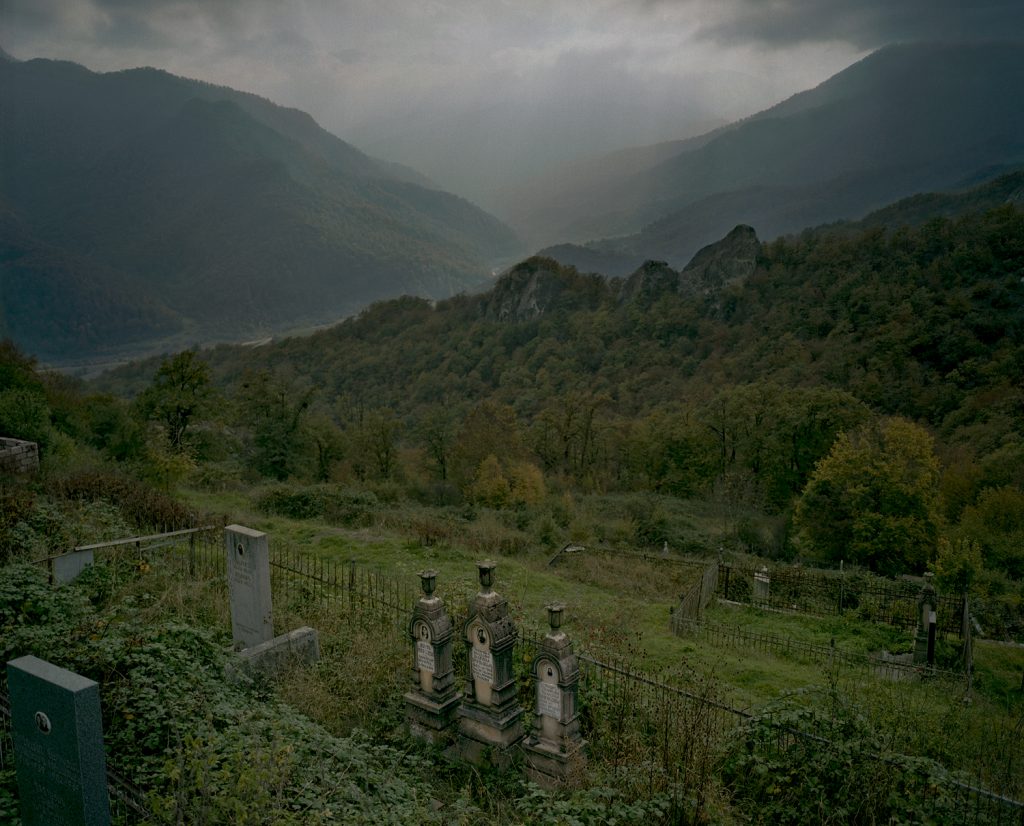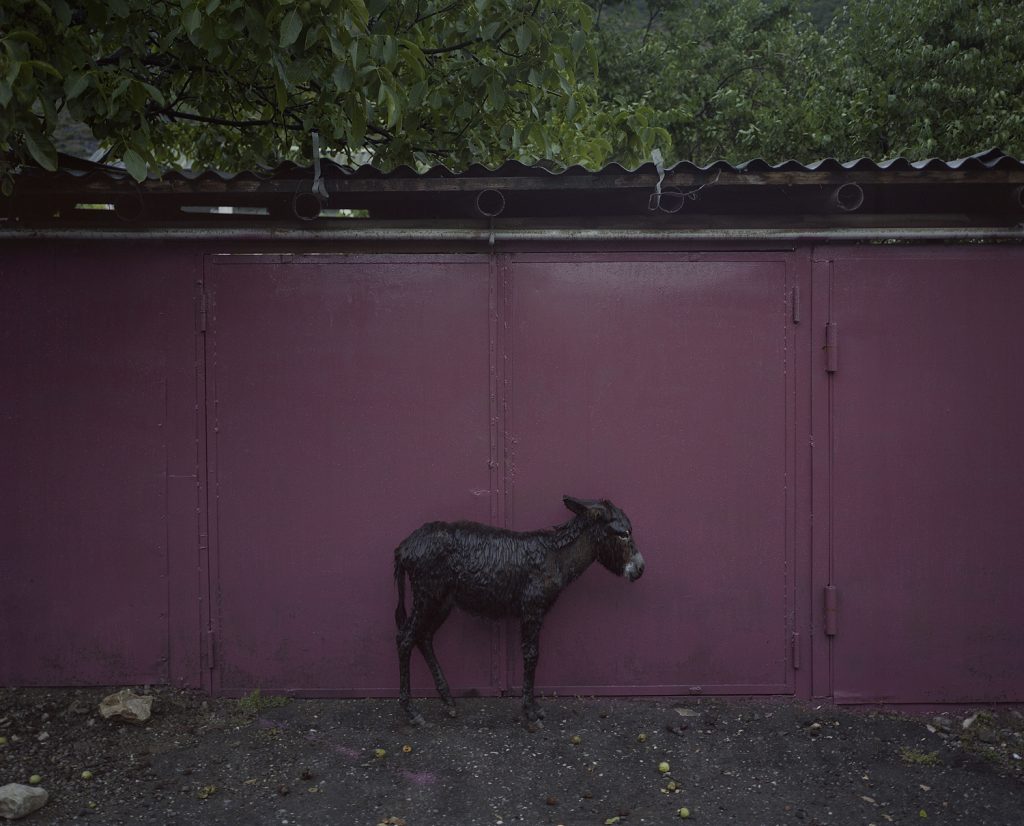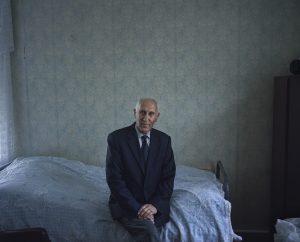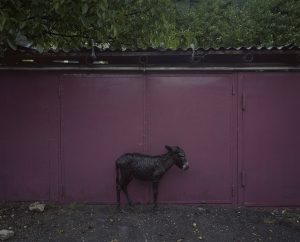

- Aghasyan Aharon Kolatak falu. Sok helyen a mai napig kéznél vannak a fegyverek. // Old man, Aghasyan Aharon, village Kolatak. Guns are still a natural part of many households..
- Susi városa. A minaret romjai jelzik, hogy a háború előtt sok muszlim élt a városban. // Town of Susi. The ruins of Minaret show proof that many muslims inhabited the area before the war.
- Legelésből hazafelé tartó lovak. // Pasture horses going home.
- Susi város, Khacsaturján tanár úr immár nyugdíjasként. Édesapja volt az elpusztított örmény iskola igazgatója, fia pedig a helyi kórház igazgató főorvosa. // Town of Shushi. Retired teacher, Khacsaturyan. His father used to be the principal of the Armanian school, his son is a director at a hospital in the region.
- Shushi város. Georgij kutyájával a város leginkább lepusztult részén lakik. // Shushi. Georgij and his dog live in the slums of town.
- A volt szovjet szimbolumok a mai napig megtalálhatóak a kissebb lelpüléseken is. // The symbols of the past are everywhere, even in the smallest village too.
- Vank falu. Armen és a családja méhészettel foglalkozik. // Vank village. Armen and his family keep bees.
- Shushi. Volga a ködben. Bár a karabahi háborúnak már lassan húsz éve vége, a város még mindig sok helyen romos állapotban van. // Shushi. Volga in the fog. Although the Karabakh war ended 20 years ago, many parts of town are still in ruins.
- Alvó ikerpár Vankban. A szegénység ellenére fontos a gyerekvállalás, az állam a népesség gyarapodása miatt támogatja a gyerekeket vállaló fiatalokat. // Twins sleeping in Vank. Despite poverty, it is important to have children, and the government supports young families to help increase the population.
- A háborúban sokan elvesztették párjukat így sokszor a családokban a nagyszülők nevelik az unokákat.Vardadzor falu. // In the war a lot of women lost their husbands. Grandparents raise the children in many cases because the parents died in the war. Vardadzor village.
- Gandzaszar. A temetők fontos szerepet töltenek be az emberek szomorú és viszontakságos életében. Sokan minden nap látogatják a rokonaik sírját. // Gandzasar. Cemeteries are placed in central places because of the peoples’ sad and stormy past. Folks visit almost every day the graves.
- Megázott kölyök szamár a kerítéshez húzodva próbál melegedni. Vank falu // Azokh village, Wet Donkey
- Keresztkövek // Khachkars
- Vank falu, Artur // Village Vank, Artur
- Gát // Dam
- „Tag Jur”, azaz meleg víz. Örmény emberek fürdenek a földből feltörő forró vízben. // „Tag jur”. Hot waters swimmers Armnian people.
- Gazzella az úton. // Gazell on the road.
- Az örmény holokauszt és az Azerbajdzsánnal vívott háború hatásai a mai napig érződik a mindennapi életben. // The Armenian holocaust and the war with Azerbaijan left painful marks on their everyday life.
- Vardadzor, Disznok hevernek az árnyékban a falu utcáján. // Vardadzor, Pigs are relexing. They make their own needs to themselves.
- Vank falu. A háborús veterán régi vezetők képeit nézi a a kutúrházban. // Village Azokh. The war-veteran is staring at old chiefs in the club room.
- Vörös csillag egy régi kapun. // Red star on the gate.
- Vank falu. A kis falvakban az emberek nagyon szegények, mégis szinte mindenhol megtalálható a televizió és a parabolaantenna. // Village Vank. The little villages’ people are very poor, but they still have their own television.
- Focipályán legelő szamarak. // Donkeys eating grass on the soccer field.
- Vardadzor. Hovik régi örmény sírok közt imádkozik. A talpköveikről letaszított több mázsás sírköveket egyedül emelővel és vascsövek segítségével rakta vissza a helyükre. // Vardadzor. Hovik is praying among the Armenian gravesites. He put the heavy headstones back onto the graves alone, with the help of metal rods and pullies.
- A karabahi örmény áldozatok sírhelyei mindenhol megtalálhatók. // The graves of Armenian victims can be found everywhere in Karabah.
- Vardadzor. Gyászoló özvegy sír a háza előtti padon. // Vardadzor. Grieving widow crying on the bench in front of her house.
- Gandzaszar. Az örmények vették fel Európában először a kereszténységet, egyházfőjük a katolikosz. // Gandzaszar. Armenian were the first to become Christians in Europe, their head of church is Catholicos.

Old man, Aghasyan Aharon, village Kolatak. Guns are still a natural part of many households..

Town of Susi. The ruins of Minaret show proof that many muslims inhabited the area before the war.

Pasture horses going home.

Town of Shushi. Retired teacher, Khacsaturyan. His father used to be the principal of the Armanian school, his son is a director at a hospital in the region.

Shushi. Georgij and his dog live in the slums of town.

The symbols of the past are everywhere, even in the smallest village too.

Vank village. Armen and his family keep bees.

Shushi. Volga in the fog. Although the Karabakh war ended 20 years ago, many parts of town are still in ruins.

Twins sleeping in Vank. Despite poverty, it is important to have children, and the government supports young families to help increase the population.

In the war a lot of women lost their husbands. Grandparents raise the children in many cases because the parents died in the war. Vardadzor village.

Gandzasar. Cemeteries are placed in central places because of the peoples’ sad and stormy past. Folks visit almost every day the graves.

Azokh village, Wet Donkey

Khachkars

Village Vank, Artur

Dam

„Tag jur”. Hot waters swimmers Armnian people.

Gazell on the road.

The Armenian holocaust and the war with Azerbaijan left painful marks on their everyday life.

Vardadzor, Pigs are relexing. They make their own needs to themselves.

Village Azokh. The war-veteran is staring at old chiefs in the club room.

Red star on the gate.

Village Vank. The little villages’ people are very poor, but they still have their own television.

Donkeys eating grass on the soccer field.

Vardadzor. Hovik is praying among the Armenian gravesites. He put the heavy headstones back onto the graves alone, with the help of metal rods and pullies.

The graves of Armenian victims can be found everywhere in Karabah.

Vardadzor. Grieving widow crying on the bench in front of her house.

Gandzaszar. Armenian were the first to become Christians in Europe, their head of church is Catholicos.
Nagorno-Karabah
This area in the Caucasus, inhabited mostly by Armenians, declared its independence from Azerbaijan at the time of the collapse of the Soviet Union. The following years were characterised by economic crisis, then an open war broke out between Azerbaijan and the Armenian population of Nagorno-Karabah, in which thirty-five thousand people died. The two neighbouring countries are still at war officially, since to this day Azerbaijan claims the province of Nagorno-Karabah, inhabited mostly by Armenians, as their own territory. The aftermath of this war, together with that of the Armenian Holocaust, can still be felt in the everyday life of the people, the new conflict reopened the old wounds. The walls are hung with old photos, the faces reflect sorrow. Weapons are common in many households. Many a times grandparents bring up their grandchildren because part of the generations between them, which are supposed to play a pivotal role in the society, have perished in the war. This situation is worsened and maintained by the fact that there are boundaries between these territories, with unofficial border guards, unofficial stamps, governments and ministers.



























